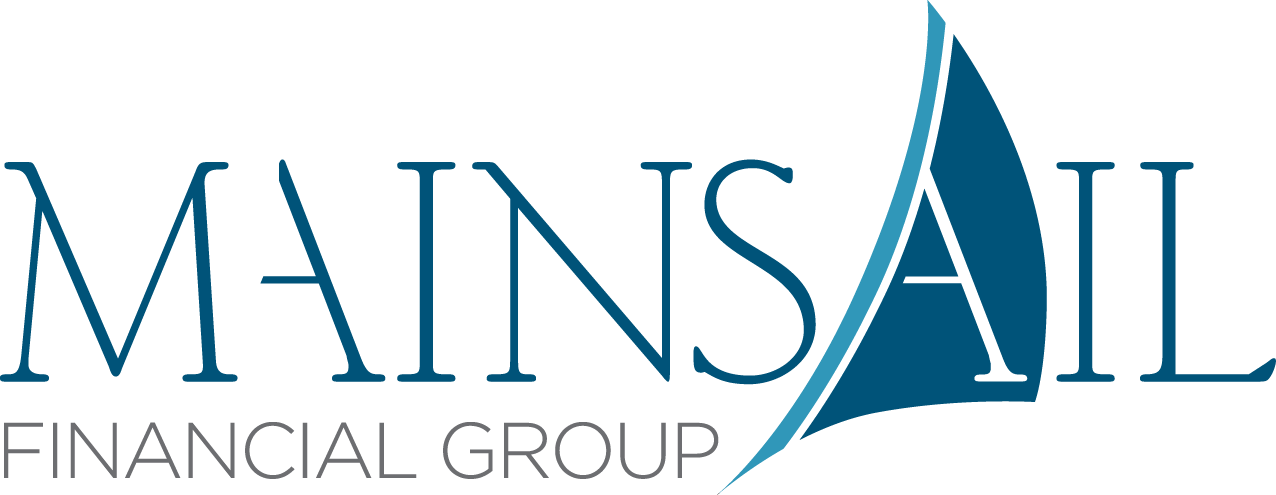When You Should You Consider a Roth IRA Conversion
Get this article sent straight to your inbox!
Lately many have become aware of the benefits around Roth IRAs, especially as it relates to tax-free growth and distributions. Rather than getting a small tax break today on pre-tax assets in exchange for a much larger tax bill as the account grows, many wonder how they can take advantage of Roth IRAs in retirement, in order to make the most of their nest egg. By strategically shifting away from only traditional, pre-tax assets and instead making Roth IRA conversions, you may be able to maximize your long-term savings and minimize tax burdens in retirement.
But that begs the question, when is a Roth IRA conversion right for you?
The answer to this question depends on your specific situation. Here are some examples of scenarios where Roth conversions could be beneficial.
If all your assets are tax deferred
We often find many folks have a huge portion of their assets in pre-tax (or tax-deferred) retirement buckets. For those who fall in this camp or might even have all their assets here, Roth conversions can be a great strategy to make sure you aren’t stuck down one path.
Are you prepared for taxes in retirement?
For more long-term tax planning strategies, claim your FREE copy of Brandon’s eBook, Retire by Design!
For tax diversification
Just like we diversify our investments, diversifying our future tax liabilities can create opportunities as well. If the tax landscape shifts, or you find yourself in a position where you need additional funds, diversifying your tax liabilities will create different tax buckets to pull from. The additional flexibility will allow you to make the most of any future tax scenario at hand.
If you expect taxes to go up
This may seem obvious, but pre-tax retirement accounts give you a tax break today as a tradeoff for a future tax bill. Roth accounts, on the other hand, may provide tax-free distributions and create opportunities in the future if you expect taxes to go up. In this scenario, paying slightly more tax today on a Roth conversion may be well worth the price tag to avoid even higher taxes down the road.
If your Required Minimum Distributions (RMDs) are more than you need
Often, our clients have saved more than they may need in retirement and have a large amount in pre-tax retirement accounts. One of the challenges this common scenario presents is that the IRS will eventually force you to take money out. After a certain age the IRS wants to collect since they have given you a tax break all this time, and they do so by requiring distributions that are fully taxed.
For many of our clients, these forced distributions (known as Required Minimum Distributions, or RMDs) are often more than they need to take out, therefore creating more income and more taxes than are necessary. In this scenario, if you are proactive in reviewing the impact of these future RMDs you may be able to get a leg up by converting a portion of your IRA assets to Roth in order to significantly reduce the amount you must take out in the future, as well as reduce your tax liability associated with the RMD. As it stands today, the IRS does not require distributions from Roth IRAs, so you can leave more funds invested for future use or estate planning purposes.
If you want more flexibility in the future with larger expenses
Another reason to explore Roth conversions is to prepare for unexpected expenses. It is impossible to plan for every single expense we may encounter throughout our lives. By having some funds in the Roth bucket, it may allow you to withdraw tax-free money if you run into a large expense down the road. Since qualified distributions are tax-free, pulling funds from your Roth may avoid a scenario where you move into higher a tax bracket. Alternatively, taxable distributions from a traditional IRA can create consequences where you see increased tax bills.
If you want to leave more to kids or beneficiaries
Retirement accounts typically have distribution requirements when left to the next generation as well. That said, with effective Roth conversion strategies you may be able to pay slightly more tax today for a much lower tax bill on your assets in the future to your heirs. This is especially true if the beneficiaries are in higher tax brackets. Often, when assets are passed to children, the heirs may be at the peak of their earnings career. If your beneficiaries are already in a high tax bracket, you may consider converting assets to Roth today if your personal tax bracket is lower, rather than paying taxes when the account is inherited at a higher rate.
For instance, let’s say you are hovering around the 22% tax bracket today and your beneficiaries are paying closer to 35%. If you know these assets are likely to go to your beneficiaries, converting to Roth now at a22% tax rate for your beneficiaries to save taxes of 35% or more in the future may be a very effective strategy. On top of the simple math, it is also important to note that the Roth funds may grow over time, allowing for even more tax-free growth advantages. In addition, distribution rules for beneficiaries often create a situation where they need to take out a significant sum. This distribution could jump them up into an even higher tax bracket and diminish the inheritance you have left them even further.
When considering a Roth IRA conversion, here is what to watch out for:
Jumping up tax brackets
Roth conversions are considered ordinary income for the tax year in which you process the conversion itself. This means that any funds converted will be added to your taxable income for that year and could increase not only your tax bill, but also the tax bracket you fall into. Being careful of the amount you convert is extremely important. For this reason, it may not make sense to convert assets to Roth while you are working, unless your income is lower (or your spouse’s, if filing jointly), or you have otherwise seen a significant decrease in taxable income from previous years.
Where taxes will be paid from
Roth conversions are a taxable event so the tax will be due on any amount converted. This tax can be either withheld from the conversion transaction itself or paid as part of your tax bill when you file in April the following year. Although the withholding may seem like the easiest option, it may not be best. If you withhold taxes from the conversion itself, it reduces the amount of funds that end up in your Roth account. For instance, if you converted $50k from your IRA to your Roth IRA and withheld 20% for taxes, the amount in your Roth account will now only be $40k, which is the $50k from your IRA minus the 20% withholding.
It is often most ideal if you have excess cash to pay the tax bill on these conversions when you file out of other cash holdings. Not only does this allow more to go into your Roth account and grow tax free, but it also creates the effect of additional savings. Although the dollar figure remains the same between what you had in your pre-tax IRA vs the new Roth IRA balance, given that the new funds are now tax-free, you will find yourself with more purchasing power. This strategy creates the effect of additional after-tax savings given that the same $50k is now tax-free to you in the future.
Are you making a critical retirement planning mistake?
To learn retirement distribution strategies and develop a thoughtful income strategy, click here to claim your FREE online course!
The Roth IRA 5 Year Rule
The Roth IRA 5 Year Rule applies to each individual Roth conversion event. This means that if you convert Roth money in 2024, you will need to wait until 2029 before you are eligible for qualified distributions. If you did another conversion in 2025, you would need to wait until 2030 before you are eligible for qualified distributions on these monies. However, any distributions tied to the conversion in 2024 will now be eligible to be considered qualified in 2030 and onward.
This applies to the total converted amount each year. If you did take funds out that do not satisfy the requirements for a “qualified distribution”, you will likely trigger a 10% penalty if you are under age 59.5. After age 59.5, it is possible you may trigger taxes on any earnings associated with the conversion amount in question.
You can learn more about the Roth IRA 5 Year Rule in our blog post about the topic.
IRMAA and Medicare
If your income exceeds certain thresholds, you may find that your Medicare premiums start to increase. This increased premium is called the Income Related Monthly Adjustment Amount (or IRMAA) surcharge and is tiered, based on the income you recognize for a given tax year So, if you handle Roth conversions strategically, you can avoid increased Medicare premiums by making sure conversions do not push you above certain thresholds. However, even if you already are experiencing IRMAA surcharges, it is important to note how any Roth conversion may further impact your Medicare premiums moving forward. There is also a 2-year lookback period for these increases to factor into your tax planning strategies.
The increasing advantages associated with Roth accounts reflects a growing understanding of the importance of tax-free growth and distributions as it pertains to retirement and your financial planning. By strategically shifting away from only traditional, pre-tax assets and instead converting to Roth, you can maximize your long-term savings and minimize tax burdens in retirement. Be sure to consider the scenario you find yourself in and be cautious about your tax bracket, where taxes will be paid from, the Roth IRA 5 Year Rule, as well as IRMAA and Medicare impacts.
Of course, there are certainly other considerations to make in every individual’s and family’s financial planning, so please do not hesitate to reach out to us should you have any questions about how Roth conversions may benefit your situation.

